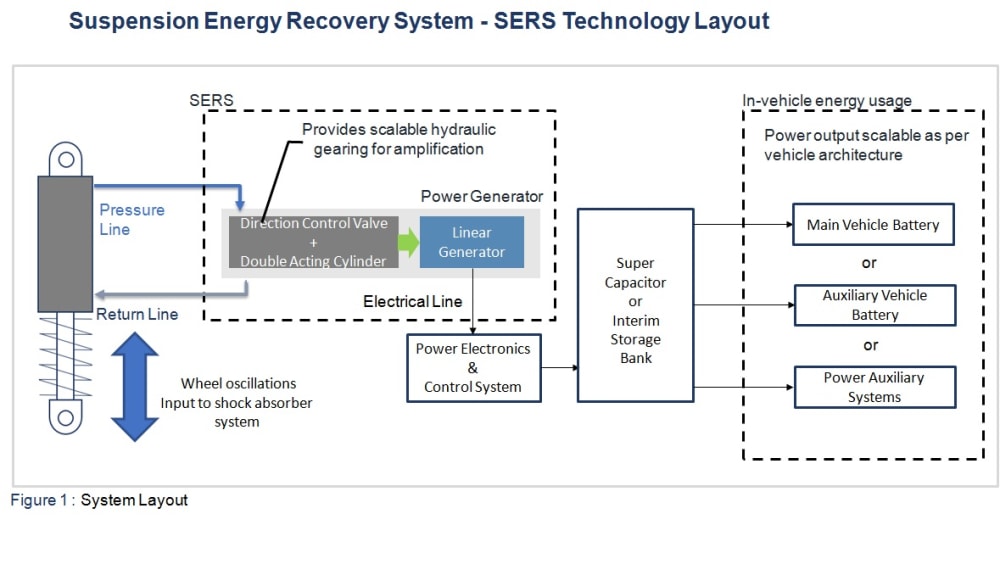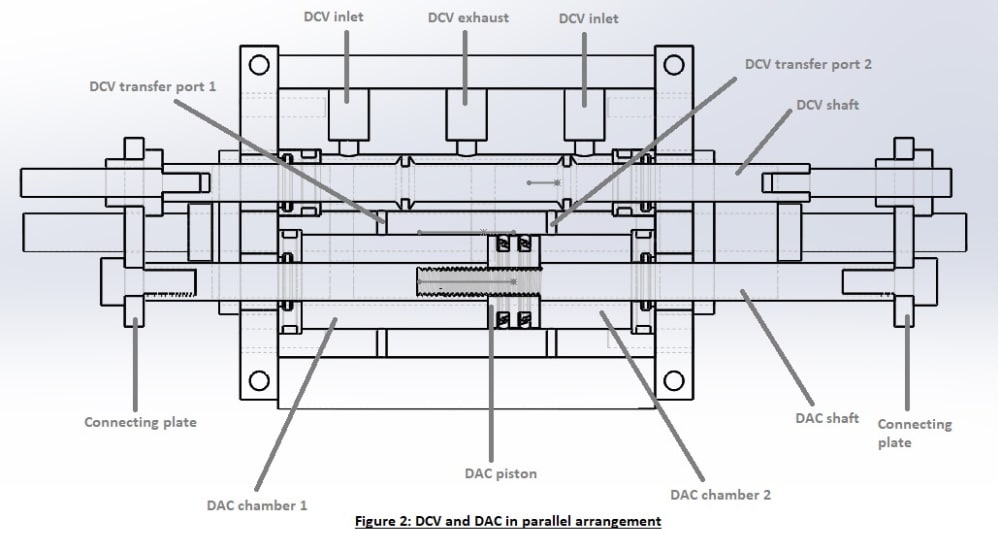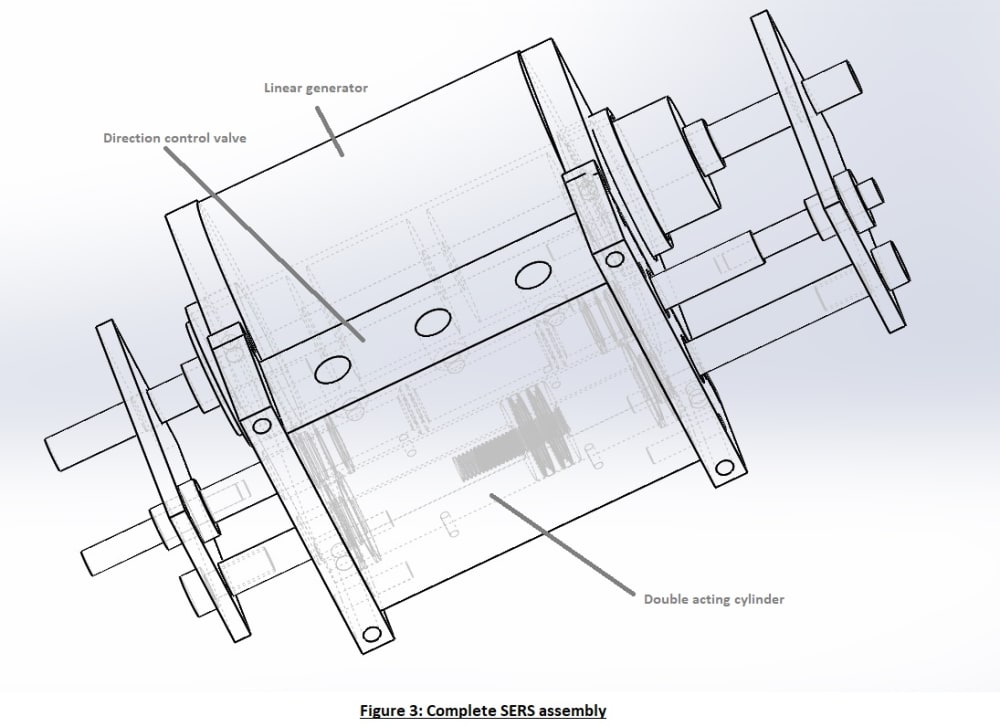

The benefits of using Kinetic Energy Recovery Systems (KERS) in braking is already evident from motorsports and production hybrid-electric vehicles. Another area that has a high potential for KERS implementation is the suspension system.
SERS is a suspension energy recovery system that employs a patented reciprocation technique to increase the input frequency to a linear generator, improving vehicles' energy harvesting efficiency.
Energy from road imperfections and vehicle movements during acceleration, braking, and cornering get transferred to the automotive shock absorbers, creating a pressure increase in the working fluid. SERS employs a unique combination of a direction control valve (DCV) and double-acting cylinder(DAC) to harness this fluid energy in achieving higher operating frequencies necessary for a linear generator to produce useable electrical energy.
Working: The pressurised fluid from the shock absorbers is channelled via check valves to a DCV. Check valves are necessary to ensure that the pressurised fluid has a single line to the DCV, whether the shock absorber is in compression or expansion. The DCV controls the transfer ports that fill chamber 1 & 2 of the DAC. The shafts of the DCV and DAC are connected together such that as chamber 1 of DAC fills, the piston is pushed, resulting in the DCV switching the pressurised fluid to chamber 2. The fluid from chamber 1 is now channelled via the exhaust port of the DCV back to the shock absorber; the pressure increase in chamber 2 also helps push the fluid in chamber 1 through the exhaust port. Alternating the fluid flow into the two chambers of the DAC result in a high-frequency reciprocation of the DAC piston and shaft. This high-frequency reciprocation motion can generate sizeable electrical energy by connecting the DAC shaft to a linear generator. This electrical energy is modulated and sent to the battery of a hybrid vehicle. The volume ratio between the shock absorber and the DAC effectively acts like the gear ratio in rotary systems.
Benefits: As can be seen, SERS uses only two reciprocating shafts to connect with the linear generator. Compared to the current technology of employing rotary systems that use turbines and gears, this helps in compact packaging, low losses and reduced system cost. The design also does not necessitate any change in suspension geometry or layout as the oscillator and generator can be placed separately. Furthermore, DCV and DAC are simple, well-researched components with the ease of manufacturing, a significant factor in bringing this technology to production. Increased range, reduced charging time, and additional vehicle operational availability, especially for fleet operators, are the system's main advantages. Additional benefits include reduced load on the electrical grid from electric and hybrid vehicles and overall lower emissions. Also, when used on commercial vehicles like cargo or dumper trucks, the addition and reduction in weight can generate power even when the vehicle is stationary.
This work has been supported by the Department of Science and Technology, Government of India, Government of Karnataka, Royal Academy of Engineering (UK)-Leaders in Innovation Fellowship.
Video
-
Awards
-
 2021 Automotive/Transportation Honorable Mention
2021 Automotive/Transportation Honorable Mention -
 2021 Top 100 Entries
2021 Top 100 Entries
Like this entry?
-
About the Entrant
- Name:Aditya Deshpande
- Type of entry:teamTeam members:Aditya Deshpande, Saroja Siddamal, Amankumar Saha, Vivek Kumar
- Software used for this entry:Simulink
- Patent status:patented








